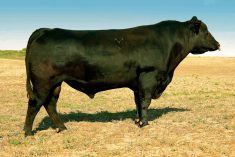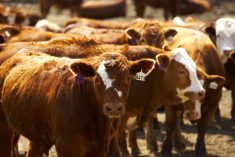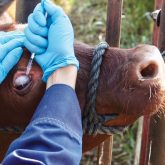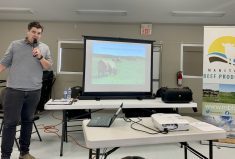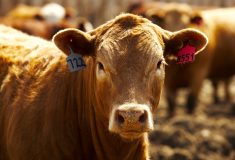Beef producers around Riding Mountain National Park have their hopes riding on a good hunting season.
Manitoba Beef Producers (MBP) is waiting on the newest round of bovine tuberculosis tests, sampled from deer and elk harvested near the national park, in a bid to convince the U.S. Department of Agriculture that Manitoba is free of the disease.
Infected wildlife has been known to spread that pathogen to cattle, leading to several past cases of tuberculosis in Manitoba.
Disease free
Brian Lemon, MBP general manager, says Manitoba’s domestic cattle are free of the pathogen, but the U.S. is so far unconvinced. With the exception of slaughter animals, spayed heifers and steers or calves between the age of five days and four weeks, all cattle shipped to the United States must have been tested for tuberculosis within 60 days of shipping, according to the Canadian Food Inspection Agency.
Read Also
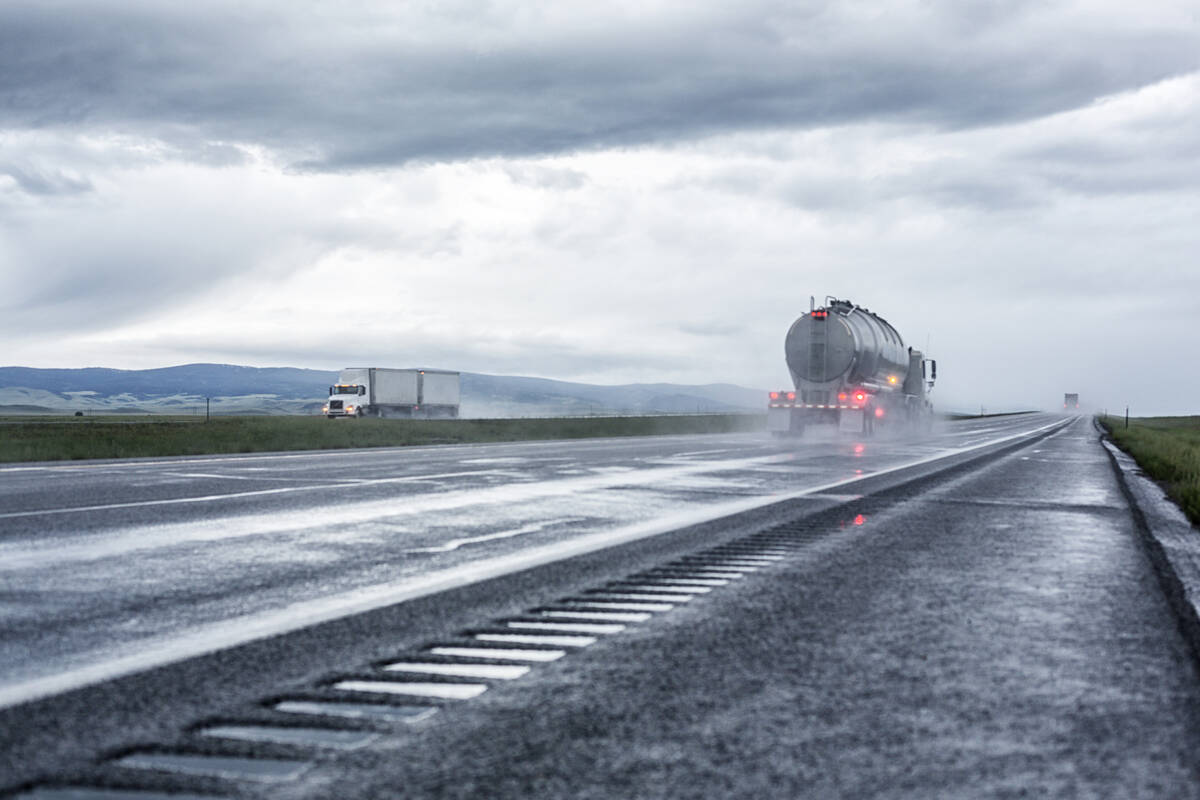
Province pledges funds to CentrePort Canada
The Manitoba government has pledged $450,000 towards projects at inland port CentrePort Canada.
“It’s a big issue,” Lemon said. “Live animals need to be tested for tuberculosis before they’re allowed to go into the States. Depending on the market, the volume of live cattle going south, (the impact) fluctuates. Depending, again, on the exact timing of the market, there’ll be more or less animals going south. It’s huge for those producers who ship live animals into the U.S., every one has to be tested for tuberculosis.”
By 2021, the producer group hopes enough wildlife samples are gathered through Manitoba Sustainable Development to get testing requirements lifted.
The U.S. Department of Agriculture introduced testing requirements in 2002, after the Riding Mountain area suffered a number of occasional outbreaks and the province noted an increasing number of infected elk. A farm in southeastern Manitoba also tested positive in the early 2000s, an infection that was later linked to cattle movement out of the Riding Mountain area.
Disease zone
Infections eventually led the province to create the Riding Mountain Tuberculosis Eradication Area in 2003, an area surrounding the national park from Highway 83 to the west to Highway 5 to the north and Highway 45 and PR 357 to the south.
The area became the focus of surveillance and prevention programs. Both wildlife and cattle herds have been tested periodically, while the province introduced programs to prevent tuberculosis from spreading to cattle from wildlife. Today, producers can access funds for on-farm risk assessments, fencing and the purchase and veterinary costs for certain breeds of guardian dogs as part of those programs.
“The government, I would say, is working on that part to try and keep the contact of the elk and beef cows at a limit,” producer Teren Garlinski said.
Bovine tuberculosis is a chronic concern for Garlinski, who houses his cattle southwest of Grandview in one of the province’s highest-risk zones. Hay fences and 3D anti-deer fencing have become facts of life on his operation.
Likewise, he said, his operation felt the impact of U.S. testing requirements although he has since shifted his operation away from sales that would require the tests.
Samples needed
Reporting is mandatory for hunters and hunters are informed of the requirement when they receive an animal tag.
According to Allan Preston, MBP’s tuberculosis co-ordinator, Manitoba has not had a domestic cow test positive for the disease since 2008, while the last case found in deer was reported in 2009 and tuberculosis was found in elk in 2014.
The wildlife program has run into an obstacle in the last two years, however, as poor hunting limits the number of samples.
No elk or deer tested positive last year, although deer samples were too low to meet the needed targets. In total, 119 deer and 55 elk were sampled last year from around the national park.
“What we’re going to do this year to try and improve our submission rate is to resort back to live capture and testing,” Preston said.
The live capture will cover both the core risk area, the area following the Birdstail River in the RM of Rossburn and RM of Grandview, as well as the rest of the Riding Mountain Eradication Area.
“It gets a little complicated in terms of grading different samples,” Preston said. “And what I mean by that is if we have a sample from a mature cow shot in the core area of the park, that’s much more valuable than a very young animal shot in the far eastern end of the park because it’s outside of the core,” Preston said. “Again, we’re trying to get samples from across the jurisdiction, but the really valuable ones are from the core area.”
Preston says the USDA has been open to the idea of lifting test requirements if Manitoba can prove itself tuberculosis free.
Preston also pointed to proposed changes to the U.S. policy on tuberculosis and brucellosis, proposals that have been in discussion for years and that, according to a 2016 document by the U.S. Animal and Health Inspection Service, would set up a five-category system for tuberculosis status. A region’s status would be determined by its tuberculosis program and threshold of bovine tuberculosis (Level 1 regions would have a tuberculosis prevalence of less than 0.001 per cent of the herd over the last two years).




